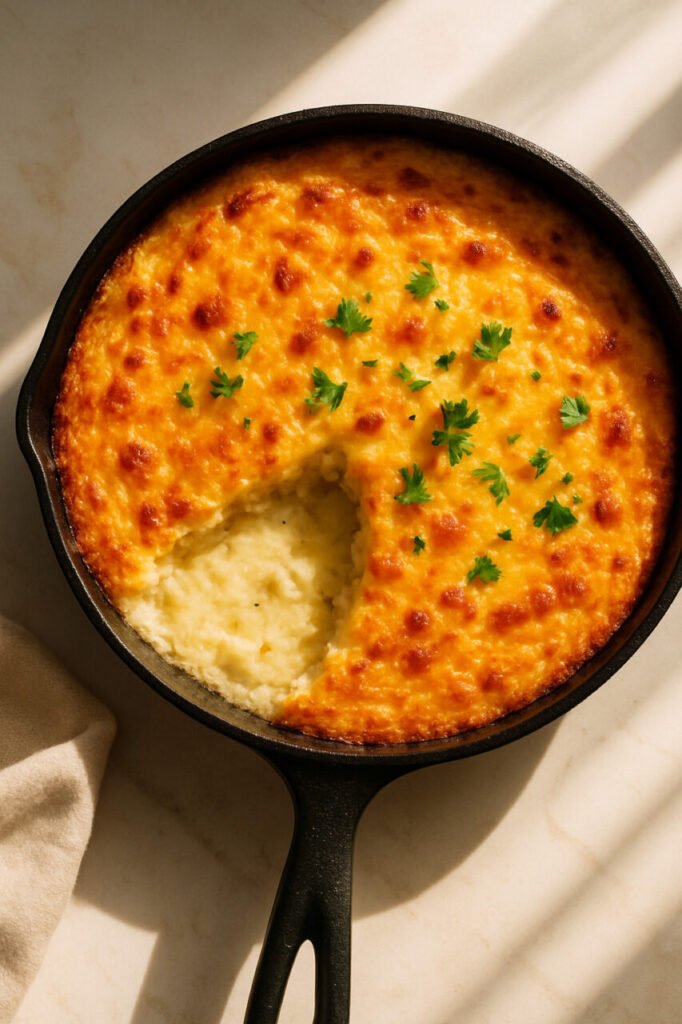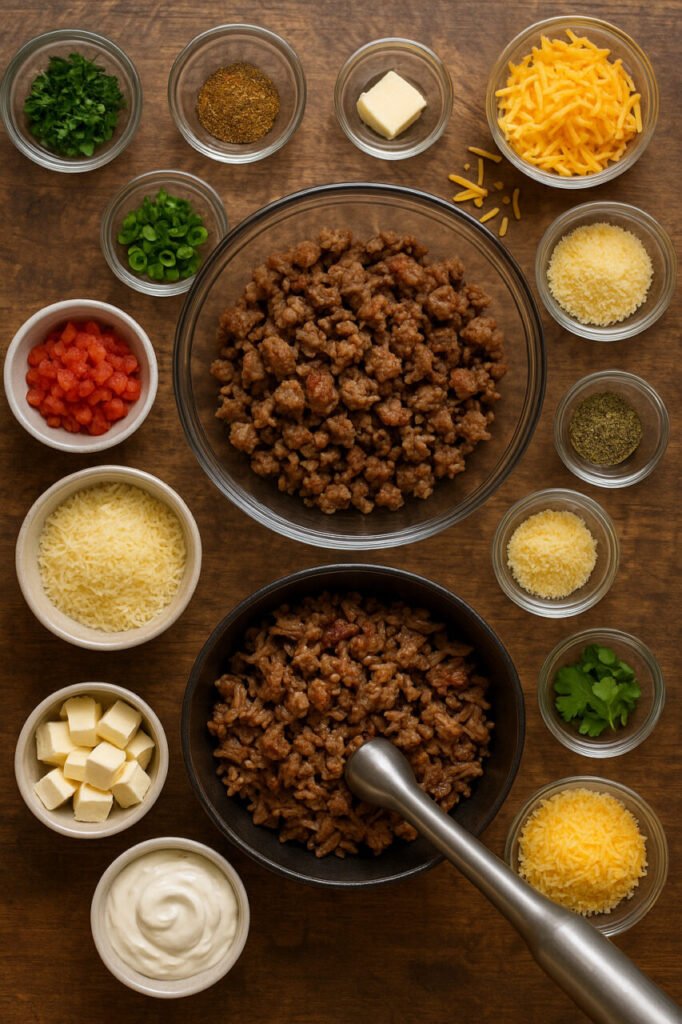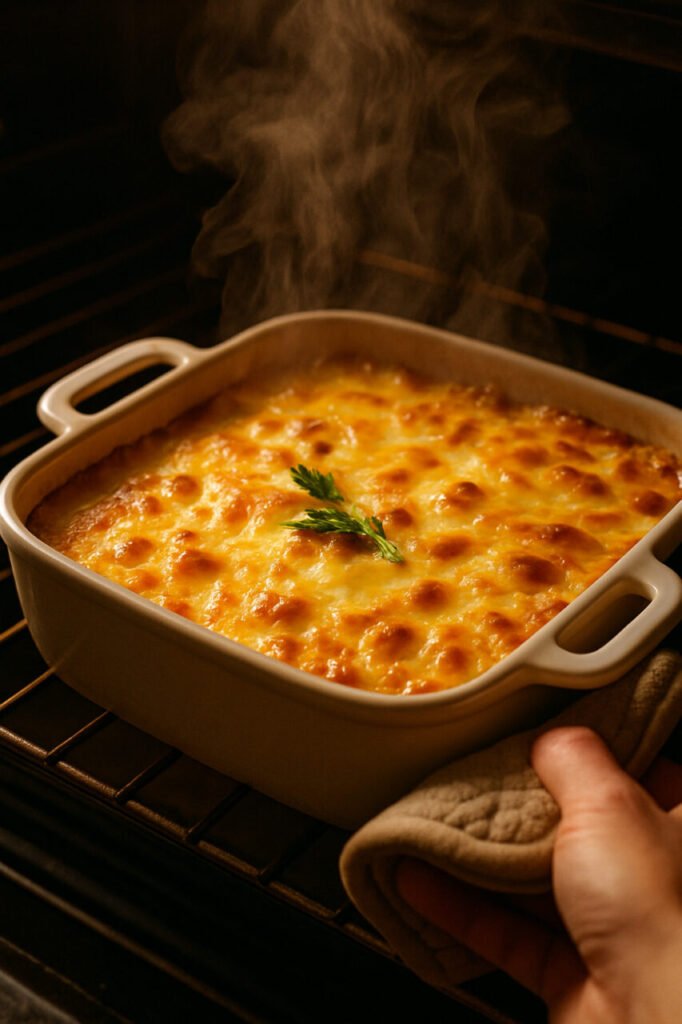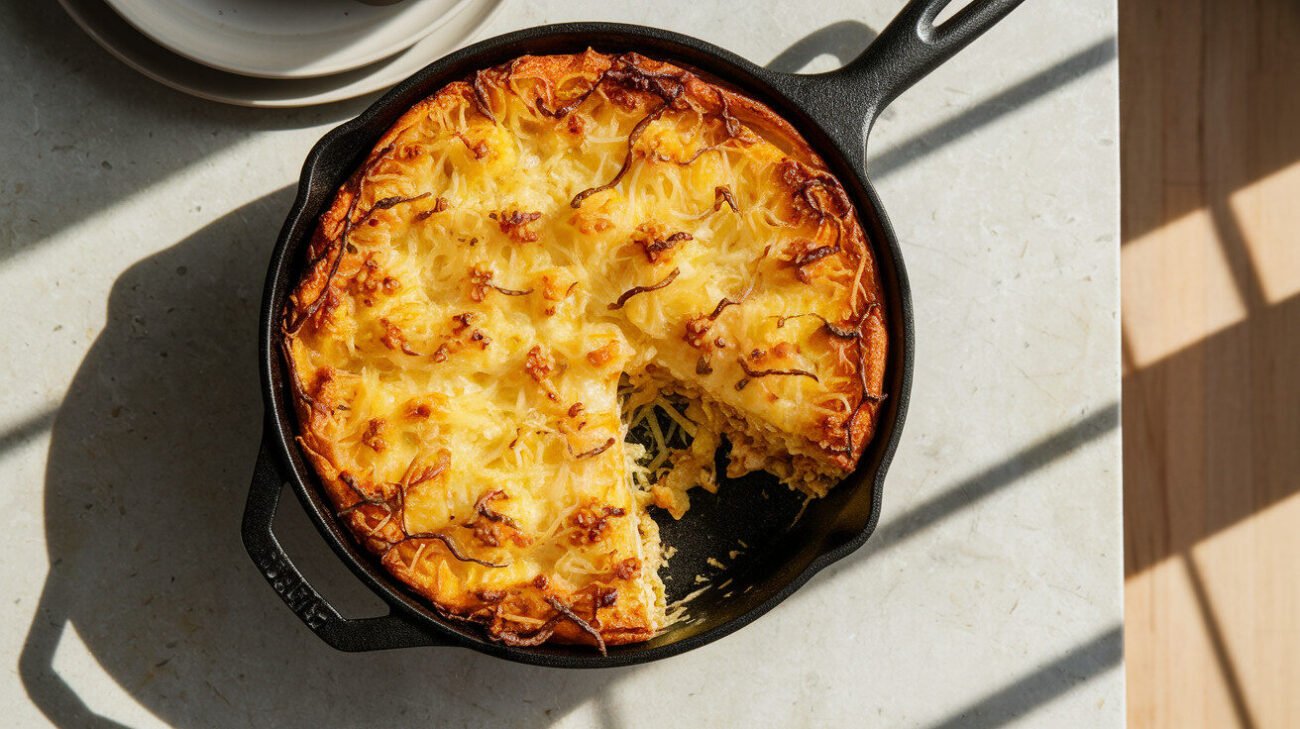Why This Keto Breakfast Casserole is a Game-Changer
Look, I’ve tested probably two dozen keto casserole recipes over my career, and most of them… well, they’re just okay. They’re either too dry, too eggy, or they fall apart when you try to serve them. This cheesy keto sausage breakfast casserole is different—and I don’t say that lightly.
What makes it stand out? The texture, honestly. Most keto casseroles rely too heavily on eggs as the primary binder, resulting in what essentially becomes a baked frittata. Not this one. We’re using a strategic combination of ingredients that creates something closer to a traditional breakfast casserole, just without the carb-heavy bread elements. The mouthfeel is richer, more substantial. It doesn’t have that rubbery quality that plagues so many low-carb egg dishes.
The Perfect Make-Ahead Keto Breakfast
Meal prep is non-negotiable for sustainable keto adherence—I’ve seen this pattern consistently with my readers. When hunger strikes and there’s nothing prepared, that’s when people reach for carb-heavy convenience foods. This casserole solves that problem elegantly.
From a food science perspective, the flavors actually improve after overnight refrigeration. The spices distribute more evenly, the cheeses continue to meld with the other ingredients, and the structural integrity actually firms up. I typically recommend portioning it before storing—it reheats more evenly that way. Use glass containers rather than plastic; the glass doesn’t absorb odors and allows for better temperature control during reheating.

Balancing Macros for Sustained Energy
Getting the macronutrient ratio right in keto cooking isn’t just about staying under 20g net carbs—it’s about creating sustained energy throughout the morning. This is where many homemade keto recipes fail commercially.
The sausage provides substantial fat and protein, but the type matters immensely. I’ve found that pork sausage with around 70-80% lean content creates the ideal fat ratio without making the casserole greasy. The eggs contribute additional protein while acting as our primary structural component. Then there’s the cheese—which isn’t just for flavor. The fats in cheese are slower digesting, which helps prevent the mid-morning energy crashes I often hear about from readers transitioning to keto.
Gathering Your Ingredients for Success
The quality of your ingredients directly correlates with your final result—this isn’t chef snobbery, it’s practical kitchen experience. With fewer components than traditional casseroles, each one carries more weight in the final product.
Here’s what you’ll need:
Ingredients:
- 1 pound breakfast sausage (70-80% lean)
- 8 large eggs
- 1/2 cup heavy cream
- 1/2 cup unsweetened almond milk
- 2 cups shredded cheddar cheese (shred yourself—trust me)
- 1 cup shredded mozzarella
- 1/4 cup grated Parmesan
- 1/2 cup diced onions
- 1/2 cup diced bell peppers
- 2 cloves garlic, minced
- 1 teaspoon paprika
- 1/2 teaspoon black pepper
- 1/4 teaspoon salt (adjust based on sausage saltiness)
- 1 tablespoon olive oil or avocado oil
Selecting the Right Sausage and Cheese
Sausage selection is critical—it’s the flavor foundation. I avoid pre-cooked sausages entirely; they don’t render fat properly and often have a rubbery texture. Look for fresh breakfast sausage in casings that you remove, or bulk sausage without added sugars. Read labels meticulously—many brands add dextrose or other sweeteners that can add hidden carbs.
Regarding cheese: pre-shredded cheeses contain anti-caking agents like potato starch that can affect texture and add sneaky carbs. I always recommend buying block cheese and shredding it yourself. The difference in melt quality is dramatic—pre-shredded cheese often has a waxy mouthfeel because those additives inhibit proper melting.
Understanding Keto-Friendly Dairy Options
Heavy cream versus almond milk—this combination might seem counterintuitive, but there’s methodology here. The heavy cream provides rich fat content and helps with emulsion, while the almond milk adds liquid without making the mixture too heavy. I’ve tested this with all heavy cream, and the result is almost too rich—it can feel heavy on the palate.
For those sensitive to dairy, full-fat coconut cream can substitute for heavy cream, though it will impart a subtle coconut flavor. Nutritional yeast can provide some cheesy flavor for the topping, though the texture won’t be identical. I’ve found that Violife brand mozzarella-style shreds work reasonably well for dairy-free needs.

Step-by-Step Recipe: Cheesy Keto Sausage Breakfast Casserole
Preparing Your Casserole Base
Start by preheating your oven to 375°F (190°C). This temperature is crucial—it’s high enough to set the eggs properly but not so high that the cheeses burn before the center cooks through.
In a 10-inch cast iron or oven-safe skillet, heat the oil over medium heat. Add the sausage, breaking it up with a wooden spoon. Cook until browned—about 6-8 minutes. Don’t rush this step; proper browning creates flavor compounds that simply won’t develop if you crowd the pan or cook too quickly.
Remove the sausage with a slotted spoon, leaving about 1 tablespoon of rendered fat in the skillet. Add onions and bell peppers, sautéing until softened—approximately 4-5 minutes. Add garlic and cook for another 30 seconds until fragrant. Remove vegetables and set aside with the sausage.
In a large bowl, whisk the eggs vigorously until uniform in color. Add heavy cream, almond milk, paprika, black pepper, and salt. Whisk until fully incorporated. The emulsion should be smooth and consistent—this ensures even cooking throughout the casserole.
Achieving the Perfect Bake and Cheese Melt
Now for assembly: return the sausage and vegetable mixture to the skillet, spreading evenly. Sprinkle about 1 1/2 cups of the cheddar cheese and all of the mozzarella over the sausage mixture. Pour the egg mixture evenly over everything.
Here’s a pro technique: use a fork to gently lift the ingredients around, allowing the egg mixture to seep underneath. This prevents the dreaded “egg layer on top, everything else on bottom” phenomenon I see in poorly constructed casseroles.
Combine the remaining 1/2 cup cheddar with the Parmesan and sprinkle evenly over the top. The Parmesan creates a beautiful crust while the cheddar ensures good melt coverage.
Testing for Doneness and Resting
Bake for 25-30 minutes. The timing will vary based on your oven and skillet material—cast iron retains heat differently than stainless steel. Look for these indicators: the edges should be golden brown and pulling slightly away from the sides, the center should be set with only a slight jiggle, and an instant-read thermometer inserted into the center should read 160°F (71°C).
Resting is non-negotiable—I see people skip this step constantly. Allow the casserole to rest for 10-15 minutes before slicing. This allows the proteins to set properly and the internal structure to stabilize. Cutting immediately causes collapse and a watery texture.

Storage, Reheating, and Meal Prep Strategies
Proper Storage for Maximum Freshness
After cooling completely (this is important for food safety), portion the casserole into individual servings. I prefer glass containers with tight-fitting lids—they don’t absorb odors and are microwave-safe.
The casserole will keep refrigerated for 4-5 days. For longer storage, freeze individual portions for up to 3 months. When freezing, I wrap each portion in parchment paper before placing in containers to prevent freezer burn and make reheating easier.
The Best Reheating Methods for Texture
The microwave is convenient but often ruins texture—it can make the eggs rubbery. For best results, reheat in a toaster oven or conventional oven at 350°F (175°C) for 10-15 minutes until warmed through. If you must use a microwave, do so at 50% power and place a cup of water in the corner to prevent drying.
From frozen, thaw in refrigerator overnight before reheating, or add 10-15 minutes to the baking time if reheating from frozen.
Frequently Asked Questions
Can I make this casserole dairy-free?
Yes, but with texture compromises. Use coconut cream instead of heavy cream, and select a dairy-free cheese that melts well. Violife and Miyoko’s Kitchen have the best melting properties in my experience. The flavor profile will shift, but it remains keto-friendly.
How can I add more vegetables to this recipe?
Spinach (wilted and squeezed dry), mushrooms (sautéed first), and broccoli (blanched and chopped) work well. Always pre-cook vegetables to remove excess moisture—raw vegetables will make your casserole watery.
What’s the best way to calculate the macros for my specific ingredients?
I recommend using an app like Cronometer where you can input exact brands and quantities. Generic database entries can be inaccurate. Weigh your ingredients rather than using volume measurements for precision.
Can I freeze this keto breakfast casserole?
Absolutely—it freezes remarkably well. Portion before freezing, and consider vacuum sealing for optimal texture preservation. Thaw overnight in refrigerator before reheating.
My casserole is too wet; how can I fix this?
This usually results from vegetables releasing moisture. Next time, ensure you’re cooking vegetables properly before adding. For salvage, return slices to a 400°F (200°C) oven for 5-7 minutes to evaporate excess moisture.
What are some good egg substitutes for this recipe?
For egg allergies, you can use 1 cup of whipped silken tofu blended with 1 tablespoon of psyllium husk powder per 4 eggs. The texture will be slightly different but still enjoyable.
How long will this casserole last in the refrigerator?
Properly stored in airtight containers, it maintains quality for 4-5 days. Beyond that, the texture begins to deteriorate and moisture separation occurs.
